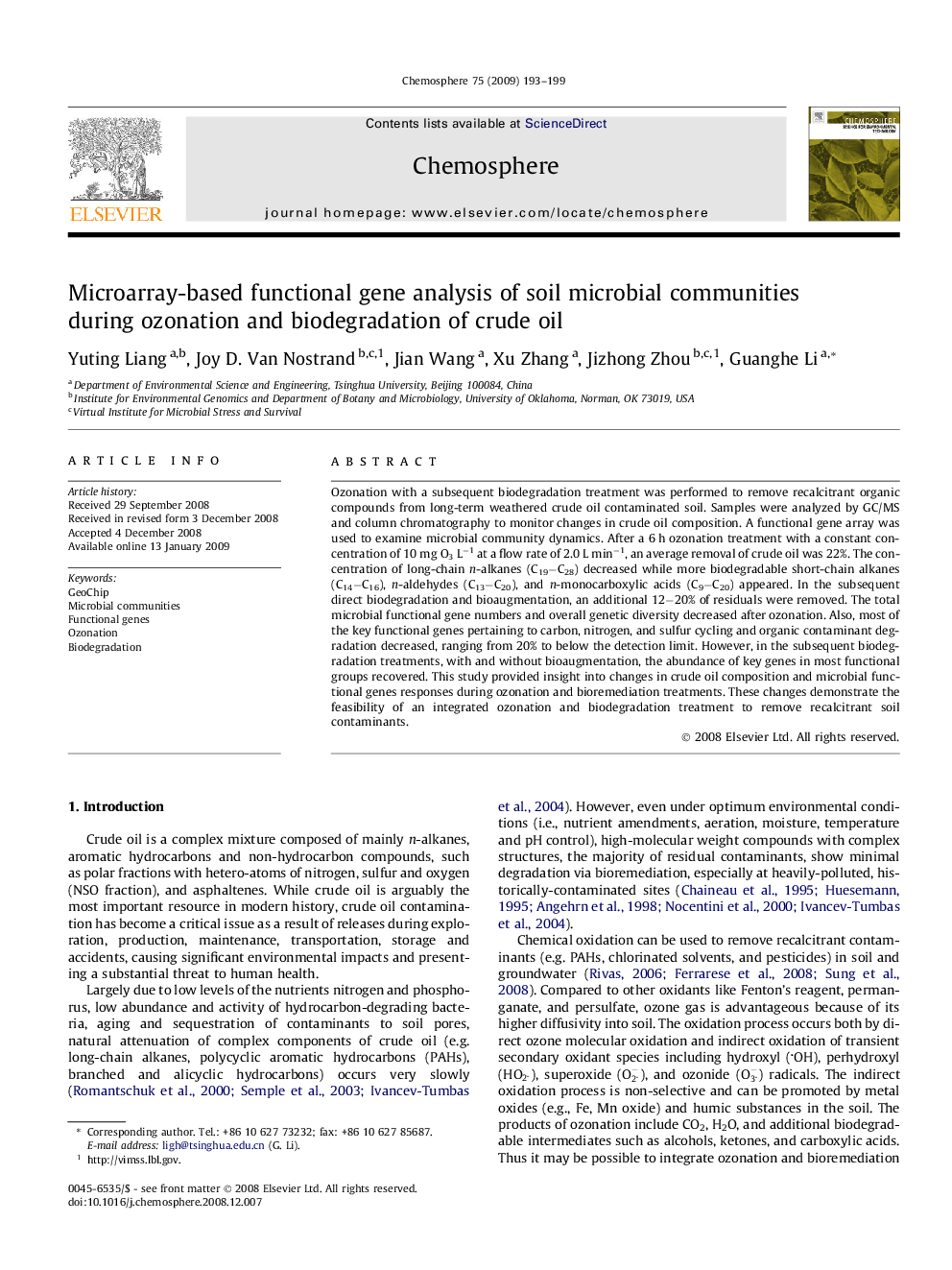| Article ID | Journal | Published Year | Pages | File Type |
|---|---|---|---|---|
| 4413021 | Chemosphere | 2009 | 7 Pages |
Ozonation with a subsequent biodegradation treatment was performed to remove recalcitrant organic compounds from long-term weathered crude oil contaminated soil. Samples were analyzed by GC/MS and column chromatography to monitor changes in crude oil composition. A functional gene array was used to examine microbial community dynamics. After a 6 h ozonation treatment with a constant concentration of 10 mg O3 L−1 at a flow rate of 2.0 L min−1, an average removal of crude oil was 22%. The concentration of long-chain n-alkanes (C19−C28) decreased while more biodegradable short-chain alkanes (C14−C16), n-aldehydes (C13−C20), and n-monocarboxylic acids (C9−C20) appeared. In the subsequent direct biodegradation and bioaugmentation, an additional 12−20% of residuals were removed. The total microbial functional gene numbers and overall genetic diversity decreased after ozonation. Also, most of the key functional genes pertaining to carbon, nitrogen, and sulfur cycling and organic contaminant degradation decreased, ranging from 20% to below the detection limit. However, in the subsequent biodegradation treatments, with and without bioaugmentation, the abundance of key genes in most functional groups recovered. This study provided insight into changes in crude oil composition and microbial functional genes responses during ozonation and bioremediation treatments. These changes demonstrate the feasibility of an integrated ozonation and biodegradation treatment to remove recalcitrant soil contaminants.
